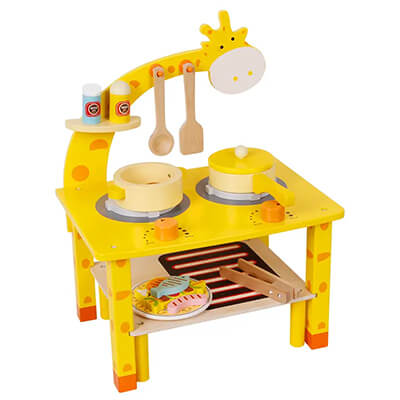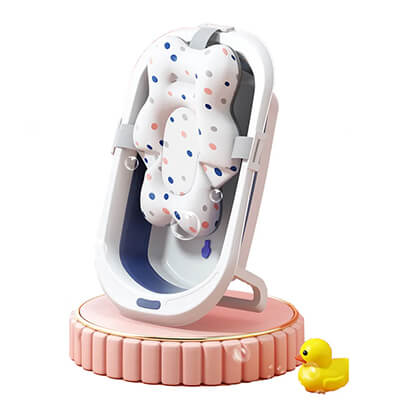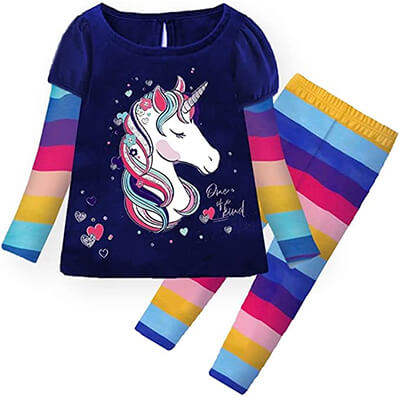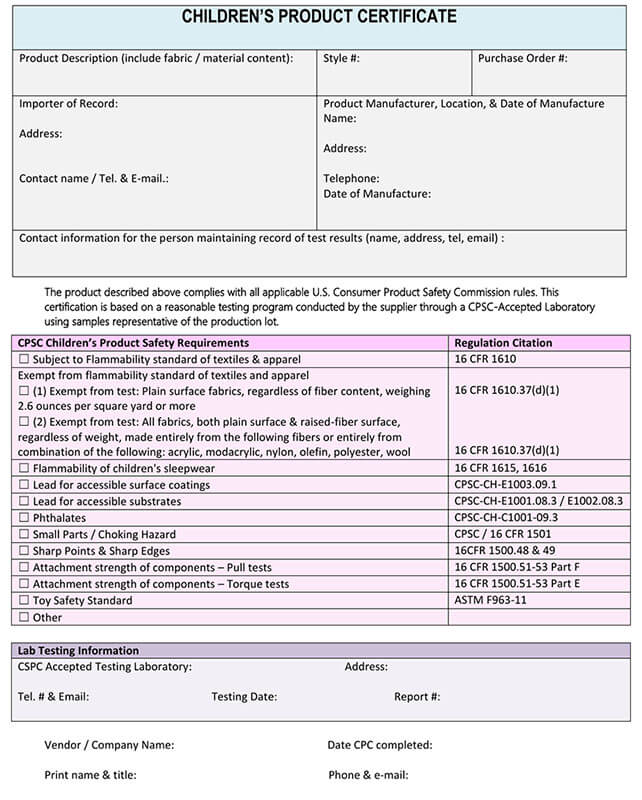Children’s products have a huge consumer market in the USA. A lot of people want to do children’s product business. However, when manufacturing or importing toys and other children’s products in the US, a Children’s Product Certificate (CPC) must be issued. In this post, you’ll learn everything about CPC and avoid some common mistakes.
- What is CPSIA compliance?
- What is Children’s Product Certificate?
- Why do you need Children’s Product Certificate?
- How much does a Children’s Product Certificate cost?
- What do you need to pay attention when issue CPC?
- What info should be covered in CPC? (With sample)
- Source Children’s products with JingSourcing.
What is CPSIA compliance?
Consumer Product Safety Improvement Act is the full form of CPSIA. It is the strictest consumer protection law enacted by the US Consumer Product Safety Commission (CPSC) since its establishment. The act was passed in 2008 with the aim of protecting consumers, especially children consumers, from the harm caused by unsafe products.
The CPSIA sets safety standards for most consumer products, including limits on hazardous substances (e.g. lead and phthalate content), product labeling requirements, and testing requirements. Manufacturers or importers are asked to conduct product testing to ensure compliance with CPSIA requirements.
What is Children’s Product Certificate?
Children’s Product Certificate (CPC) is a document. CPSC requires Manufacturers and importers of children’s products to issue CPC to certify that the products they produce or import have passed testing and comply with CPSIA requirements.
CPC is applicable to all children’s products sold in the United States under the age of 12, including toys, children’s clothing, children’s tableware, cribs, strollers, child seats, etc.
Why do you need Children’s Product Certificate?
Children’s product certificate is mandatory when you want to import and sell any children’s products in the USA.
For example, you want to import children’s toys to the US and sell them on Amazon. Then you have to send your products to the laboratory for CPSIA testing and ASTM F963 testing, prepare the CPC and provide it to the US Customs, CPSC, and Amazon platform. Without a CPC, the following situations may occur:
- Your products are seized by US Customs.
- The forwarder refuses to ship your products.
- CPSC requests mandatory product recall.
- Amazon refuses to list your products.
How much does a Children's Product Certificate cost?
CPC is not a license that you buy from the government or any third party. Manufacturers and importers can draft and issue themselves. So there is no cost to write a CPC. But before that, your products must be tested by a CPSC-accepted third-party laboratory first, to certify that they meet ASTM and CPSIC standards and get a passing test report. Product testing requires a fee.
When you import children’s products from China, a third-party quality inspection company can do product testing for you, and issue a test report and CPC. Different product has different testing items, so the testing fee is also different. The price is several hundred dollars and it needs 5-7 days to complete the testing.
What do you need to pay attention when issue CPC?
You need to issue CPC for each product. For example, if your product has blue, red, and yellow models, tests of each color are required to issue CPC. Because color can be a source of lead.
The validity of CPC is two years. If there are any changes or improvements to the product during this period (e.g. new colors, designs or materials, replacement of suppliers or production facilities), a new CPC is required.
If there are already other companies selling the “same” or “similar” product in the US, it doesn’t mean you don’t have to issue a CPC. Because those products looking the same as yours may not be made with the same materials and components.
What info should be covered in CPC? (With sample)
Here’s an overview of the information you must include in your CPC.
1. Product name and description
It is usually the product description and model.
2. Citations of the regulations
You only need to cite the regulations that apply to the children’s product, such as:
- CPSIA section 101(a)(2) – Lead in accessible substrate materials (including Children’s Metal Jewelry)
- CPSIA section 108 -Phthalates
- ASTM F 963-17 Section 4.3.5.2 Heavy Elements in Accessible Toy Substrate Materials
You can search for the applicable standards yourself or get help from a lab testing company. Most testing companies evaluate applicable ASTM and CPSC standards when they quote you.
If the regulations are not listed, the CPC may be rejected, especially for Amazon sellers. Amazon is very strict on some details of CPC.
3. Importer or manufacturer information
Identify your or your manufacturer’s company name, address, and phone/email.
4. Import recorder information
Identify the contact information (name, address, email/phone) of the person who received the test report, such as your company’s Compliance Manager.
5. place and date of product manufacturing
List where the product is manufactured in the U.S. or overseas (such as China or Vietnam)
6. place and date of product testing
List where the product is tested in the U.S. or overseas (such as China or Vietnam)
7. CPSC accepted third-party laboratory information
It can be any laboratory located in the U.S. or overseas (such as China or Vietnam), as long as it is CPSC accepted. List the company name, address, contact information, etc.
Here is an example of CPC for your reference:
Source Children's product with JingSourcing.
We have helped many clients source children’s products from China, such as plastic toys, plush toys, kids’ clothing, kids’ accessories, kids’ furniture, baby products, etc.



Many of our clients come to the US and many of them are e-commerce sellers. Therefore, we are very familiar with the children’s product market in the US. We clearly know the compliance and regulations that products need to comply with. No matter what type of children’s products, we have the ability to help you source. If you have needs, we can complete product testing and obtain corresponding test reports and certificates for you.
In addition, OEM and ODM are both available. You just need to tell us the general idea or a rough draft, we can help you design, improve, find manufacturers to produce, confirm samples, follow up the production process, do quality inspections, arrange transportation, etc.


Leave A Comment